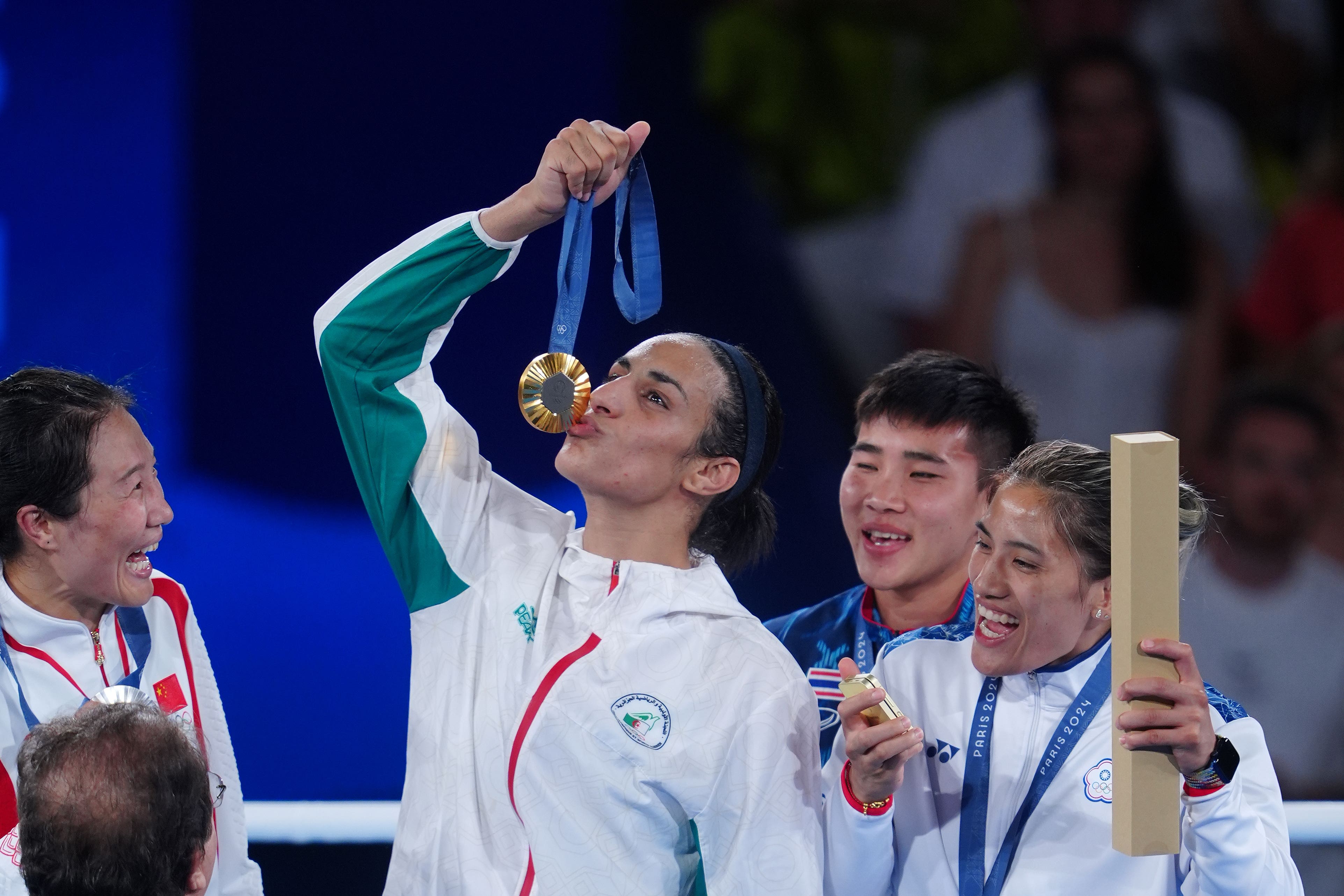As a historian of medicine, the Imane Khelif ‘scandal’ is nothing new
Following the Olympian’s success in clinching a gold medal for boxing in the midst of a row about her gender, historian Helen King explains why women’s bodies have always faced unwanted scrutiny


So there it is: Imane Khelif has won gold in the women’s 66kg category of the Olympic boxing. At the press conference, she stated: “My honour is intact now.”
Her victory does not calm the waves of hatred crashing over her.
Her medal raises questions about the shortcomings of the Russian-led International Boxing Association, and the misogynoir of attacks on Black and brown women who may not conform to Western ideals of womanhood. As Victoria Brownworth concluded in 2021, “The Olympics has a Black woman problem”. The organisation Human Rights Watch has claimed that “observation and suspicion” disproportionately affect women athletes from the Global South.
Above all, though, Khelif’s medal asks whether science can ever answer the question: who “counts” as a woman?
Discussing trans athletes, president of World Athletics Sebastian Coe has said that he is determined “to protect and preserve the female category” and that all we need to do is “monitor the science”.
As a historian of medicine and the body, I can see how these perspectives have shifted. Before the 1960s, sports officials would simply look at someone and decide whether they were a woman, from body shape, bone density, facial features, breasts or gait. This depended on very specific – and often changing – definitions of what a woman looks like, how she moves and behaves. Although sports governing bodies may no longer judge women based on appearance, controversies surrounding Imane Khelif and runner Caster Semenya show that many of us still do.
Neither of these sportswomen is trans; both were assigned female at birth, are legally female and have always identified as women. Semenya was confirmed by the Court of Arbitration for Sport as having Differences in Sex Development (DSD): specifically, 46 XY DSD. This can, for example, mean having a vagina but no womb, or breasts but also testicular tissue. Refusing the oral contraceptives that would have reduced her testosterone levels, she changed her sport to longer distance running where levels are not tested, but did not qualify for Paris.
The idea that there’s a simple test which would remove uncertainty for someone like Khelif is misguided. There is no such test, not least because sex doesn’t exist as a binary. Hormone tests came into Olympic sport in 2000, after chromosome tests were discarded. Those chromosome tests began in the 1960s, partly driven by concerns that communist countries were entering male athletes as women to increase their medal count.
But chromosomes aren’t definitive. XY women are not “men”. They may have wombs, or have the Y chromosome but without the gene which turns it on.
I’ve written about the even longer history of these questions of using the body to define sex.
Medicine has historically moved ever further into the body – increasingly invading and intruding on women’s bodies – eventually recognising that outsides may not match insides. Dissection found examples of mismatch in people who will have had no idea during their lives that they had what we now classify as DSD.
In the centuries before imaging, breasts and beards were useful clues, but menstruation was often seen as the best evidence of being a woman because it showed that there must be a uterus inside, and wombs were definitive. Living as a woman – doing women’s domestic tasks – was believed to make the “mental character” feminine.
Biopsies of living people whose sex was unclear were established in the 1910s. Should a young woman with non-functioning internal testes but nothing else masculine about her body be reclassified as a man? William Blair Bell, a leading gynaecologist, said no: it was wrong to assign a sex which matched neither her appearance nor her “instincts and social happiness”.
As Kat Brown wrote, “people are different” and the Olympics give us “the chance to see what excellence looks like – and the many different forms it comes in”. When it comes to sex, not only do some people not fit the binaries, but also “human biology is far too complicated to be represented in a single criterion” such as testosterone.
XY chromosomes? High testosterone? Or body parts? But which body parts? Let former Olympic champion Caster Semenya have the last word. Apparently she once told track officials, “It’s fine. I’m a female, I don’t care. If you want to see I’m a woman, I will show you my vagina. All right?”
Helen King’s book ‘Immaculate Forms: Uncovering the History of Women’s Bodies’ (hardcover) will be published by Profile/Wellcome on 5 September
Join our commenting forum
Join thought-provoking conversations, follow other Independent readers and see their replies
Comments
Bookmark popover
Removed from bookmarks